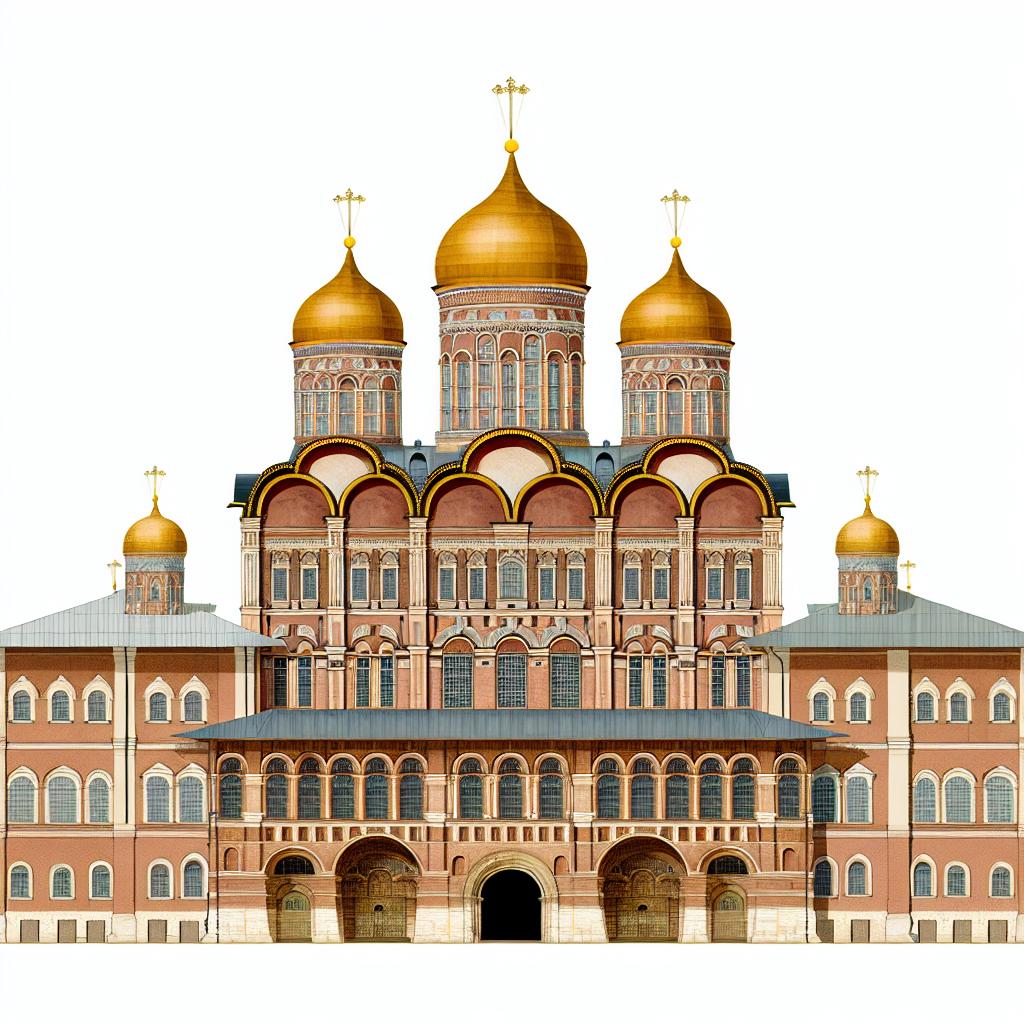Introduction to the Armoury Chamber
The Armoury Chamber is one of the most renowned museums located within the Moscow Kremlin. Situated in Russia’s historical and political heart, the chamber is a part of the extensive Kremlin complex. It not only functions as a museum but also historically served as a treasury and repository for royal artifacts and valuable items.
Historical Background
Originally established in the 16th century, the Armoury Chamber has undergone several transformations throughout its history. In 1808, it expanded into its current form under the reign of Alexander I. It was designed by Ivan Egotov, following the architectural style of the late Russian Classicism. The chamber has held significant historical importance, preserving Russia’s luxury, power, and artistic heritage over the centuries.
Since its foundation, the Armoury Chamber served as a vital part of Russian heritage preservation. During the early days of its existence, it witnessed the rule of many tsars, each leaving their mark not only on the political landscape of the country but also on the kinds of artifacts and treasures stored in the chamber. From weapons and armor that symbolize the military might of past Russian states to delicate religious items and intricately crafted jewelry, the chamber is a microcosm of Russian history itself.
Under Alexander I’s guidance, the Armoury Chamber was transformed to accommodate more artifacts. This expansion was not merely a physical one but also represented an ideological shift towards greater public access to Russia’s treasures. The intention was to display to the world the grandeur and cultural richness of Russia.
Architectural Features
The Armoury Chamber is notable for its architectural design, characterized by a harmonious blend of early Russian architecture with European influences. Visitors can observe its intricate details, vaulted ceilings, and spacious halls that house thousands of artifacts, making the structure itself a testament to historical artistry and craftsmanship.
The inclusion of European influences can be attributed to the architects of the time, who sought to integrate Russia’s traditional styles with the burgeoning architectural movements of Western Europe. The majestic use of colonnades and the extensive use of decorative arts are reflective of this cross-cultural architectural dialogue.
The building itself is an artifact. Architectural enthusiasts often admire not only what is within the walls but also the walls themselves. The nuanced designs, the structurally imposing buttresses, and the seamlessly flowing spaces speak volumes about the sophistication of Russian architects and their ability to amalgamate different styles into a coherent architectural masterpiece.
Collections and Exhibits
The museum is home to a vast collection of artifacts, including an impressive array of arms, armor, ceremonial garments, carriages, and regal paraphernalia. Among the treasured pieces are the Russian state regalia, such as the Monomakh’s Cap, a symbol of Russian autocracy. The chamber also boasts a range of religious items, including ancient icons and intricately designed chalices.
The artifacts housed within the Armoury Chamber showcase the evolution of Russian craftsmanship. From the earliest weapons forge techniques to the delicate creation of gilded icons, the museum captures various facets of Russian life across centuries. State regalia like the Monomakh’s Cap evoke the power and autocratic lineage of Russian rulers, symbolizing their divine right to govern.
Another significant part of the collection includes elaborate jewelry and precious items that once belonged to Russian tsars and emperors. The Fabergé eggs, part of the collection, are particularly reflective of exquisite craftsmanship and historical significance.
A unique feature of the museum is its collection of Fabergé eggs. Each egg is meticulously crafted, often containing hidden surprises, and was traditionally made as Easter gifts for the imperial family. These exquisite works of art symbolize luxury, innovation, and the heights of artistic achievement during Imperial Russia.
The chamber’s religious artifacts are not only of ecclesiastical importance but also an exploration into the religious history of Russia. The ancient icons, which are imbued with both artistic and spiritual significance, reveal the craftsmanship and religious devotion that went into their making.
Visitor Information
The Armoury Chamber is open to the public and is a part of the Kremlin Museums group. Visitors can explore the exhibits through guided tours that provide detailed historical context and information about the artifacts on display. It is essential to book tickets in advance, as the museum is a popular tourist destination.
For those interested in Russian history, architecture, and art, the Armoury Chamber offers a comprehensive glimpse into the country’s illustrious past, making it a must-visit site when in Moscow.
Visitors are encouraged to take a guided tour to fully appreciate the depth and breadth of the collection. These tours offer insights that transform the visit from a mere sightseeing adventure into an educational journey through time. Experts provide context and anecdotal narratives that illuminate the significance and stories behind the artifacts.
While visiting the Armoury Chamber, guests are invited to reflect on the vastness of Russian history that unfolds with each exhibit. The experience not only educates but also inspires, leaving visitors with a profound understanding of Russia’s cultural, historical, and artistic landscape.

